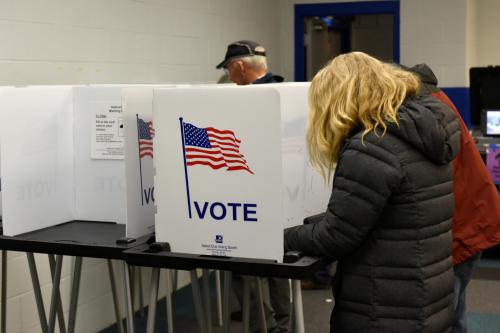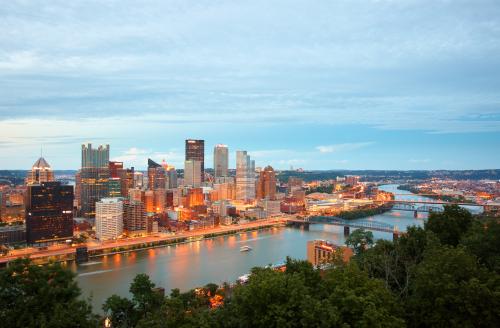If Donald Trump ends up facing off against Joe Biden in 2020, it will be portrayed as a fight for the hearts and souls of white working-class voters in Pennsylvania, Wisconsin, and my home state of Michigan.
But what do these workers want and need? The President and his allies on the right offer a mixture of economic nostalgia, crass nativism, and trade wars. Many on the left (though not Biden himself) promise a guaranteed income for underemployed and out-of-work populations.
Yet evidence suggests that most of these voters ultimately want the “dignity of work” via a good-paying job. With labor markets tightening and employers facing skills gaps—even in places like Detroit, Cleveland, and others across the former Rust Belt—the only path to that good job and concomitant dignity runs through higher levels of postsecondary education.
Our region’s workers are proud of being the muscle in the U.S. economic engine for much of the 20th century. During the Midwest’s heyday, its high school graduates could move directly into jobs that did not require higher education. During the inevitable downturns in highly cyclical industries, many picked up a community college course or two, but often did not finish a postsecondary credential.
Hence one of the many legacies of the Midwest’s leadership in the industrial economy (and great irony for a region that produces so much of the nation’s talent) is the higher share of workers in most of our states and communities with only a high school diploma, lacking the greater economic benefits and security that postsecondary credentials tend to provide. As shown in Figure 1, 30% of the workers in Midwest states overall—and as high as 36% in Pennsylvania, and 34% in Indiana and Ohio—have only a high school diploma, versus a national average of 28%.

Today the region’s workers are facing an economy that demands greater skills and technical training beyond high school. Beginning 40 years ago, under competitive pressures to cut costs and improve quality, the region’s employers dramatically restructured their business models, leading to the loss of many good-paying, lower-skill jobs in Midwest communities. Where once five workers bolted fenders on the auto assembly line, today one worker with a higher level of education and training may program and monitor robots to do the same amount of work.
Over the past decade the threat posed to these “predictable physical”[1] jobs has accelerated as the demand for digital skills increases. Recent work by my Brookings colleague Mark Muro underscores the risks to workers in occupations defined by routinized physical and cognitive skills, such as production, transportation, and food preparation. Figure 2 illustrates how Midwestern states have above average percentages of workers in two of the occupations with a high risk of automation are likely to disappear within a very few years.

The Midwest has already experienced the greatest concentration of “robot takeover” in its manufacturing; our states use half of all industrial robots nationwide, with very high concentrations in Michigan, Ohio, and Indiana. That’s another reason why, according to Georgetown University’s Center on Education and the Workforce, 99% of all new jobs created since the Great Recession require some formal education beyond high school.
In response, states and communities are focused on raising rates of enrollment and completion in postsecondary education credentials that have value in the marketplace. One major initiative has helped community colleges and universities in states like Michigan organize new institutional completion efforts and College Success Networks to improve student outcomes, especially for working adults.
Meanwhile, more governors—including Michigan’s newly-elected Gretchen Whitmer—are setting state postsecondary credential attainment goals. Here, too, efforts are focusing on the large population of adult workers as a principal target for credentialing.
Growing calls among Democratic presidential candidates for “free college” are certainly welcome, and could make a significant dent in the nation’s growing opportunity divides based on income and geography. But those calls are not always directed to, nor heard by, working adults in aging Midwestern states like Pennsylvania and Michigan. They make up the bulk of residents whom higher education needs to reach if states are to realize ambitious attainment goals.
If the promise of free college can also include guaranteed access to the skills today’s workers need to get and keep a good job, that may deliver exactly what working-class voters in Michigan and much of the Midwest most desire and deserve.
Chris Baldwin of the University of Michigan contributed to this post.
[1] As defined by McKinsey, 2017. What the Future of Work Will Mean for Jobs, Skills, and Wages







Commentary
What do Midwest working-class voters want and need?
June 13, 2019